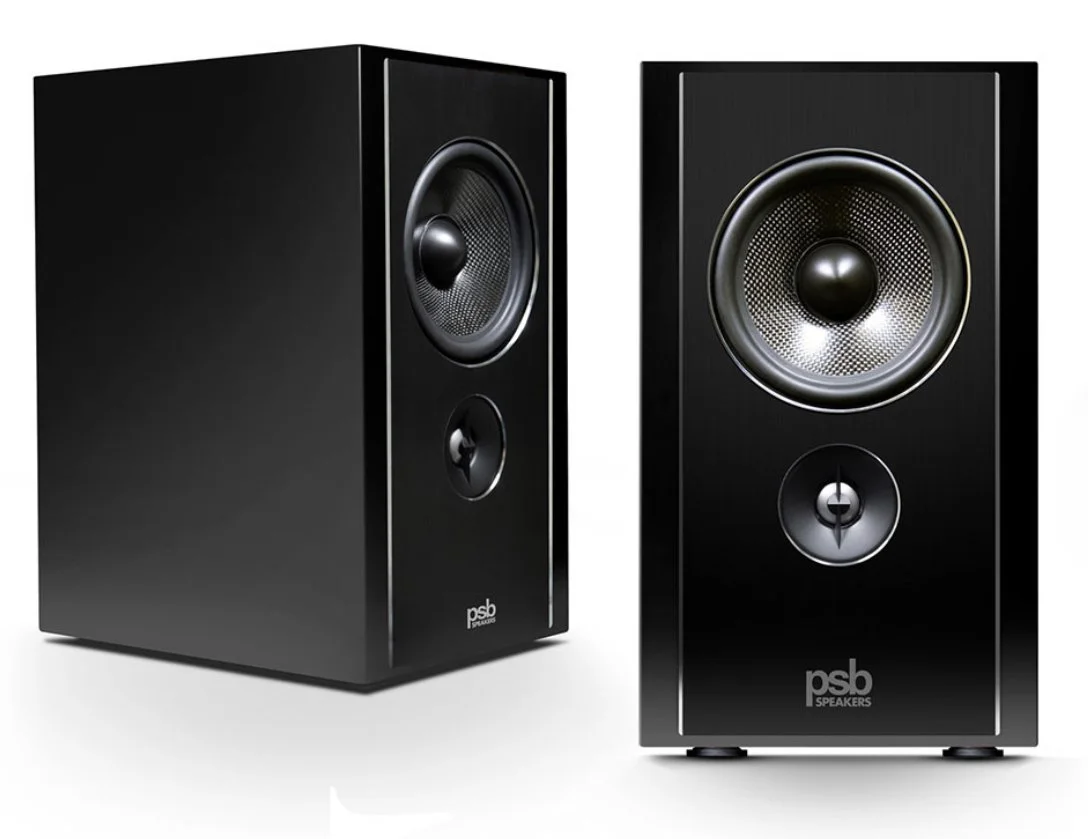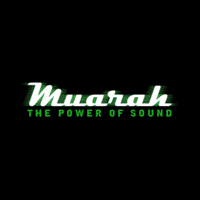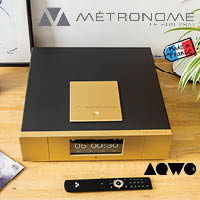PSB Synchrony B600 Bookshelf Loudspeakers
A great aspect of exploring the audio industry is learning about the personalities behind the products. It’s fascinating to understand how those personalities are infused into such highly engineered systems as audiophile loudspeakers. Paul Barton, founder and chief engineer of PSB Speakers is one of those figures in the landscape of high-end audio, known for his commitment to sound engineering and for his personal involvement in the design of every model. Since day one, PSB has used meticulous measurements to document and refine the performance of its speakers. This has helped solidify their reputation for practical performance and high value. PSB has now been in business building high-end speakers for the working man for 50 years.
It’s been my privilege to spend several weeks getting to know the Synchrony B600 Bookshelf Speaker. PSB claims the B600 is their finest bookshelf speaker to date. By resurrecting the Synchrony name, last used for a well-received flagship line several years back, they seem committed to that claim. Let’s take a look at how PSB is pushing the price-to-performance ratio with this new model which retails for $2799/pair.
Features & Specifications
What is the physical result when PSB applies their engineering-focused approach to an all-new high-performance two-way speaker? At first glance, the most distinct feature is the inverted driver configuration: tweeter on the bottom, woofer on top. This arrangement apparently results in better phase alignment between drivers from any listening height at or above the tweeter level. In practical terms, this means phase alignment should be consistent whether the listener is seated or standing.
Upon closer inspection, there are some driver materials new to PSB. The one-inch tweeter features a titanium dome and the 6 ½ inch woofer is carbon fibre. These are relatively ambitious material choices that require care in implementation.
A particularly neat feature I have only seen on much more expensive speakers is isolation feet from a name-brand collaborator. The B600 uses feet from none other than IsoAcoustics. One consideration is that the feet are spaced further apart than the top plates of many common speaker stands. In order to take advantage of the IsoAcoustics feet, consider the dedicated Synchrony stands. I can’t unreservedly recommend them only because I did not try them as part of the review.
Sensitivity is a reasonable 88dB and nominal impedance is 6 Ohms with a 4 Ohm minimum. The manufacturer's data sheet contains very detailed specifications and for those interested in further reading, some explanations behind many of the design choices.
In Satin Walnut. Also available in Gloss Black.
Design & Build
For standmount speakers from a relatively mainstream manufacturer, the B600s are large. They don’t necessarily appear any larger than suggested by the specs but they are large nonetheless. The subtle stylistic touches do create a manageable presence for the B600. The anodized aluminum faceplate adds some needed depth to the look of the boxy cabinets. What really sets it off is the thin reflective bevel around the panel. A smaller identically styled panel on the rear houses the reflex port and binding posts. There are some key technical design features related to the faceplate that are explained in detail in the data sheet linked above. Reassuring that the effort and expense was for performance benefit as well as style.
Cabinet inertness seems fantastic for the size, no doubt improved by internal bracing in combination with the heavy aluminum panels. It seems like matte is the new piano gloss these days. I was worried it would be boring but the finish is more luxe in person than I expected. It shows off the quality of the walnut veneer as well as a gloss finish I’ve seen. Additionally, the veneer is pattern matched between the two speakers. This was surely an expensive touch but much appreciated.
The quality of the magnetic grilles, sometimes an afterthought even on high-end speakers, is excellent as well.
Setup & Daily Use
My B600 review samples were well into their press tour so break-in was not a concern. Popping them on the stands for the first time the highs seemed a bit hot but I acclimated to this quickly. After swapping things back and forth I determined this was wholly attributed to my familiarity with my laid-back Wharfedale Diamonds. If the B600s were preceded by, say, a pair of Focal Arias which I reviewed recently the effect would certainly be negated.
I found the B600 ($2799/pair) to be relatively easygoing in terms of their placement. The one major consideration is they need room to breathe. I have more notes on bass below but be warned, there's plenty. The final presentation can be dialled in by briefly playing with toe-in. I preferred them firing just outside my shoulders but season the high-frequency energy to taste.
The grilles are transparent enough for casual listening but the final degree of detail is revealed with them removed.
Review System
For critical listening, I fed the B600 with an analog front end consisting of my Pro-ject Debut Carbon turntable and iFi Zen Phono. My primary digital source was the Wiim Mini streamer or Cambridge EVO 150 internal streamer. Amplifiers on hand to supply the juice included (briefly) the Denafrips Hades and Hyperion stack, Cambridge EVO 150, Vincent SV-228 Hybrid Integrated (review coming soon), and my trusty Parasound HCA-750A. Audio Art Classic cables which were just in for review were used throughout.
I was able to give the B600 a workout in two different rooms: a 14 x 20 ft living room wide open on one side and a more acoustically damped dedicated office listening room that measures 13 x 14 ft.
Photo credit: PSB
Listening
PSB uses anechoic chamber measurements to dial in the performance of every speaker. However, they do justice to their motto, “True to Nature” by correlating measurements with actual listening tests. We humble audiophiles aren’t able to measure what’s natural but we sure know natural when we hear it. What’s a better litmus test for natural sound than some sweet country singing with minimal accompaniment. For that, I turned to the legend himself, Willie Nelson, and his first LP …And Then I Wrote originally released by Liberty Records in 1962. My budget 2017 Jackpot Records reissue sounds so good I'm hardly tempted by the new Analogue Productions 45 rpm release. Every time I dropped the needle, I found myself grinning while imagining young Willie Nelson in a smoky studio. His laid-back voice, slightly behind the beat, was just floating in my room telling me stories about love and heartbreak. Present and natural. Sure there was air and space but Nelson’s voice seemed close. Beautiful warmth came not from a vintage tube amp and speakers with big paper drivers but directly from the disc and out into my room through the B600s.
Dealing up the complexity of recording but sticking to the cowboy theme, I spent quality time with a recent Grateful Dead box set, Olympia Theater Paris (5/3/72) (Rhino Records, 2021). The country tracks such as the Dead original, “Tennessee Jed” and Merle Haggard cover, “Sing Me Back Home” are excellent showcases for those classic stoned harmonies. These Europe ‘72 box sets are mastered directly from the Grateful Dead’s 16-track analog tapes and on the right system contain an enormous soundstage. With the B600s (in my home, anyway) I found the expanse of that soundstage to be limited only by the size of the room. The depth was there but most impressive was the height and width which extended well beyond the placement of the speakers.
Orchestral music was well served by both the B600’s dynamic capabilities and finesse with fine detail. Having grown up with Sergio Leone western films, scored by Ennio Morricone, I was thrilled to discover that before Morricone died a couple of years ago, he and his longtime violinist, Marco Serino, arranged several scores into suites for violin and orchestra. A recording of Serino and the Orchestra Haydn Di Bolzano E Trento conducted by Morricone’s son Andrea was released earlier this year. Cinema Suites for Violin and Orchestra (Arcana, 2022) contains some intensely sentimental performances. The set is a beautiful tribute and nicely recorded, too. Played through the B600s the presentation struck a balance between precision and simply getting out of the way of the music. Serino’s violin was very cohesive despite the B600’s crossover frequency falling well within the instrument's range. I was impressed by how well the presentation from the B600s held together at high volume.
I’m saving these notes for last to avoid the impression the B600 is a one-trick pony as some stand-mount speakers can be. Without diminishing any of my other listening remarks I must be clear: the bass response of the B600 is incredible. They are absolute cannons. Early in my time with the B600s, in an attempt to get my kids engaged in some music (and just to sit still for a minute), I discovered they love superhero movie soundtracks. When I queued up a stream of Hans Zimmer and James Newton Howard’s visceral soundtrack to The Dark Knight (Warner Bros. Records, 2008) I was blown away by the depth coming from these stand-mount speakers. I immediately had to check the specs… 50 Hz at -3dB. Maybe that’s an anechoic chamber vs. in-room issue but that spec sounds hilariously conservative. The bass is not boosted unnaturally, but the quality and depth of the response are incredible for a stand-mount two-way speaker. Subwoofers need not apply.
The least powerful amplifier I used for this review was my 75-watt-per-channel Parasound which still puts out 20 amps of current. I found that to be plenty but was not tempted to feed the B600 with anything less powerful. Overall, the most exciting match was the Vincent SV-228, with its tube preamp section and 100 watts of class AB power fed by a massive transformer. More to come on that beauty soon.
Conclusion
The Synchrony B600s ($2799/pair) are playing in a crowded market with high-quality competition. When examining speakers beyond the entry-level segment it can get tough to make a case about true value. I did not have that problem with the B600. They are a ton of speakers for the money and would be great in any system anchored by a powerful amplifier in a reasonably sized room. The B600 is a complete musical package that offers a deep connection to the music without extreme resolution which can be distracting on everyday recordings. PSB claims the Synchrony B600 is the finest bookshelf speaker they have ever made. After getting to know them I take issue with that claim: they don’t belong on a shelf. Otherwise, I concur. The Synchrony B600s are damn fine indeed.
Further information: PSB Speakers




























